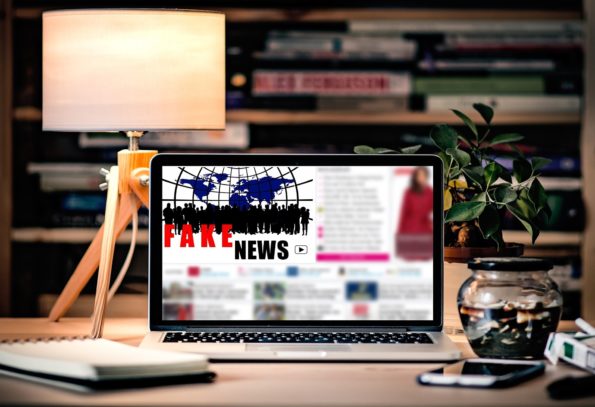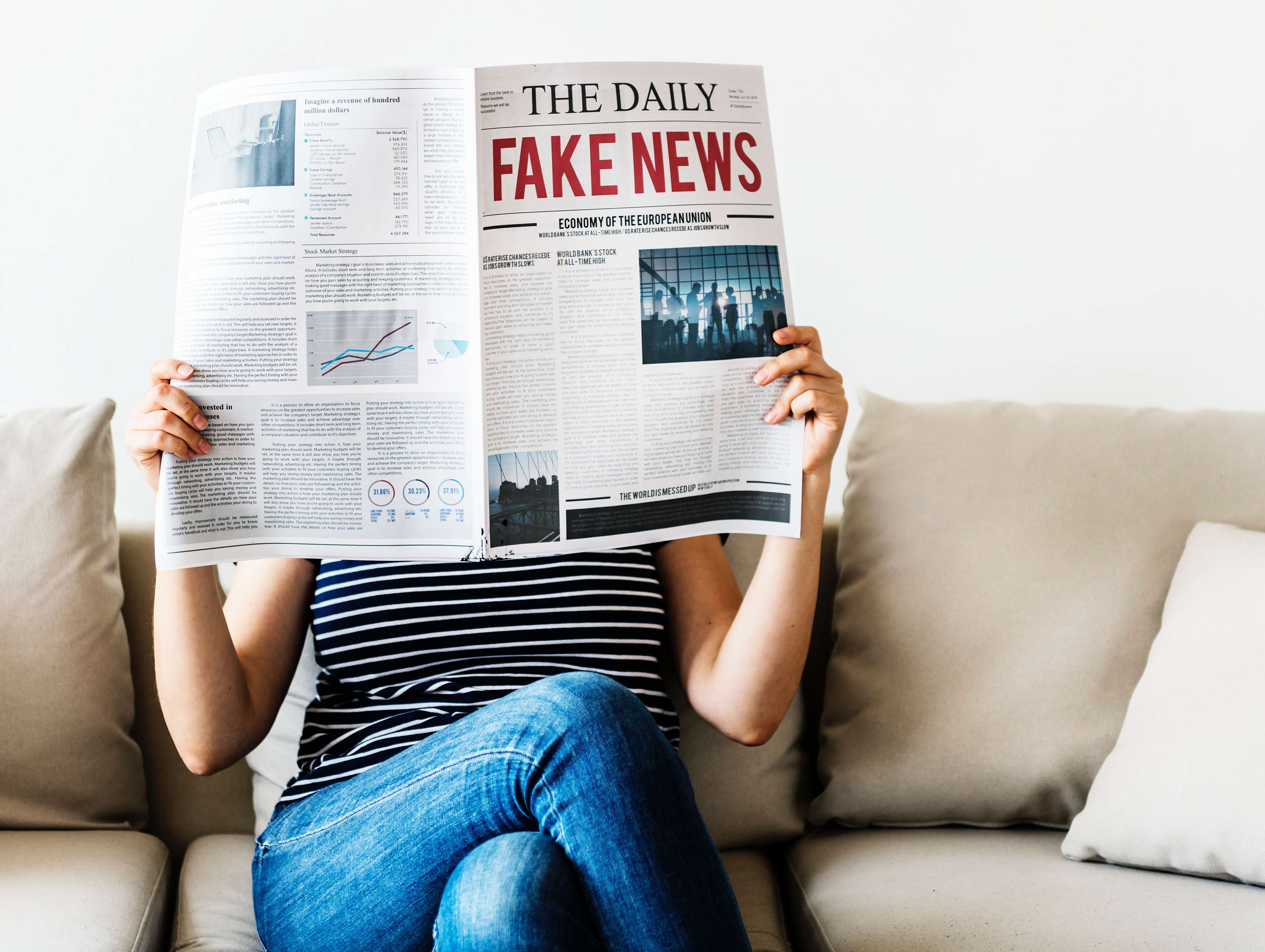Fake news. It’s the year’s biggest buzz term. It’s seen all over televised news, such as ABC and Fox. It’s in the paper and on the Internet. Fake News even can come straight from the president’s mouth. Don’t agree with a report? Call it fake news. And 2018 was no exception to fake and ridiculous headlines—
“Barron Trump Wins National Academic Award”
“Illegal Immigrants started wildfires in California”
“Malia Obama busted buying 6 pounds of Marijuana in Chicago”
Which is cause for concern considering these news articles conjugated over 300,000 views each.
But what exactly is going on?
What is Fake News?
According to the Cambridge Dictionary, can be defined as “false stories that appear to be news, spread on the internet or using other media, usually created to influence political views or as a joke.” And its influence on our world is more relevant now than ever.
Fake News Hurts Children and Teens
For students, fake news is physiologically and emotionally damaging. According to a 2018 BBC Article by Judith Burns, children don’t always know what is fake news and what is not. Take for example the young girl Chloe that Burns writes about in her article. Chloe fell victim to a fake news story. And after learning the truth, she reported Chloe feeling “Stupid” and “wishing I had looked more into it before posting.” [perfectpullquote align=”right” bordertop=”false” cite=”” link=”” color=”” class=”” size=””]”I should have looked into it a bit more before posting,” [/perfectpullquote]
Chloe isn’t the only one experiencing such feelings of doubt and shame. A group of Medical Professionals reported that children falling for fake news can harm the child’s “wellbeing, trust in journalism and democracy itself”.
They also concluded from this report that half of children and adolescents studied are worried about not being able to spot fake news, and two-thirds of children now trust the news less as a result of fake news. Not only does fake news worry children, but it worries those who educate them as well. The report stated that “two-thirds of teachers believe fake news is harming children’s well-being, increasing their anxiety levels,” and “half of teachers believe that the national curriculum does not equip children with the literacy skills they need to identify fake news.”
Impossible to Fact Check it all
As we know, fake news is often tricky, and children have a hard time deciphering between what is real, and what is not. But even adults can find themselves falling for the lies as well. Obvious lies like President Obama’s daughter buying excess amounts of pot are unmistakably false. But headlines reading ‘100,000 people face a Christmas without universal benefit’ or ‘Girl who went missing in the aftermath of the Manchester Attack’ can be much more difficult to decipher what is fiction and what is fact. And that is where fact checking comes into the picture.

Image Credits/ Pexels
According to an online article by Simone Kovacs, Lucas Graves, a professor and former journalist says that “The effort to inform the public is a worthwhile endeavor even if you know that a particular story will only have a limited audience, or might not have any immediate impact on the world.” Graves is emphasizing that fact checking is about informing your audience about the truth of a topic as much as possible. Even if people disagree with the facts or aren’t persuaded by the truth, calling out lies is at least attempting to hold people accountable. But according to an article by Maria Temming, “There’s just too much misinformation online for human fact-checkers to catch it all”. She notes in her article that before the internet, “you could not have a person sitting in an attic and generating conspiracy theories at a mass scale.” [perfectpullquote align=”left” bordertop=”false” cite=”” link=”” color=”” class=”” size=””]”There’s just too much misinformation online for human fact-checkers to catch it all”[/perfectpullquote]
Most internet users probably aren’t intentionally sharing fake news. Information overload and the average googler’s attention span aren’t exactly ready for fact checking vigilance, nor are they looking for it. One’s political, religious and economic bias plays a role as well. When you’re dealing with unfiltered information, it’s likely that people will choose something that conforms to their own thinking, even if that information is false.
Positive Effects of Fake News
Though fact checking has become a tedious and difficult task, fakes news has forced a number of news organisations to invest in fact-checking and to put it front and centre of its coverage. CNN now has an entire page on their website dedicated to fact checking and making sure the information they broadcast is accurate.
The charge to double check, to comb-over one more time, has reinvented journalism. With all of the fake new controversy and problems facing the industry, journalists feel the need to use fact checkers to stay accurate. Journalists are terrified of being called out for inaccuracies for fear of the fake news labels on social media. Which means better quality work and rebuilding the public trust that’s slowly waned over the years.
The sheer amount of fact checking sites has increased in the past five years as well, and even expanded its boarders to outside the United States. A 2018 Poynter article notes that “RealClearPolitics (a fact checker program) is now active in ten countries around the world.” The need for fact checking programs has in turn created a more active public in the fact checking world.
Political Outcomes are Swayed by Fake News
Not only does fake news have the ability to infiltrate our personal lives, but our political system as well. A 2018 article written by Danielle Kurtzleben highlights the use of social media to distribute fake news, possibly even swaying the 2016 election. The sheer amount of people directed to fake news sites through social media is much higher than social media directs to actual credible sources. Kurtzleben writes that “More than 40 percent of visits to 65 different fake news sites come from social media, compared to around 10 percent of visits to 690 top US news sites.” Not only does this feed the public irrelevant information, but it completely juxtaposes social media and journalisms original intent; to give the public the truth they deserve.

Image Credits/Pixabay
A similar study run by Princeton’s Andrew Guess, Dartmouth University’s Brendan Nyhan, and the University of Exeter’s Jason Reifler found that Facebook specifically “was a key vector of exposure to fake news…” Essentially meaning, that what they found, was people were heading to facebook for their online ‘reliable’ news. Their study stirred up a shocking statistic noting “among the three previous sites visited by respondents in the prior 30 seconds for 22.1 percent of the articles from fake news websites we observe in our web data.”
How to Fight Fake News
We undeniably live in a golden age of misinformation, and fighting this fake news may prove to be harder than we think.
But it’s worth it.
Keep it on the Down Low
It all starts with limiting arguments supporting misinformation. A 2017 New York Times article written by Niraj Chokshi notes, “The problem, is rehashing arguments in favor of misinformation can inadvertently reinforce it, strengthening the defense against the truth. That’s especially true when the lie offers a simpler explanation than the truth.” In short, the repetitive action of resurfacing past arguments in politics about fake news, can actually make these arguments stronger. This gives misinformation more power then it ever should.
Pay Attention and Get Educated
Limiting the spread of Fake News can be as simple as looking at the URL of the website you get your news. Often times, fake news websites will imitate real news network websites. Take, for example ABC News. A Colombian news site disguised itself at a credible source, but by taking a closer look, the truth is clear, as illustrated in a CNN article and video.
Support the Truth
Finally, the most effective way to prevent and fight against fake news is by presenting new information. Chokshi notes that “giving your audience new and credible information is especially effective in thoroughly unseating misinformation.” Providing information to doubters that is supported by evidence allows people to update their understanding of events, justifying why they fell for the falsehood in the first place.
The Truth Triumphs
Sure, seeing headlines about immigrants with pyromaniac tendencies, or how Obama’s daughter is a drug addict, may be exciting and more interesting than the average headline. But what separates these articles from the other lack luster ones posted, is the truth. And what separates these truths from fiction, is a well informed public. Finding the difference between fact and fiction in the news has become a civil duty, but not just because it shows right from wrong, but because we have a moral obligation to do so.
Featured image by RawPixel via Pixabay





What do you think?
Show comments / Leave a comment